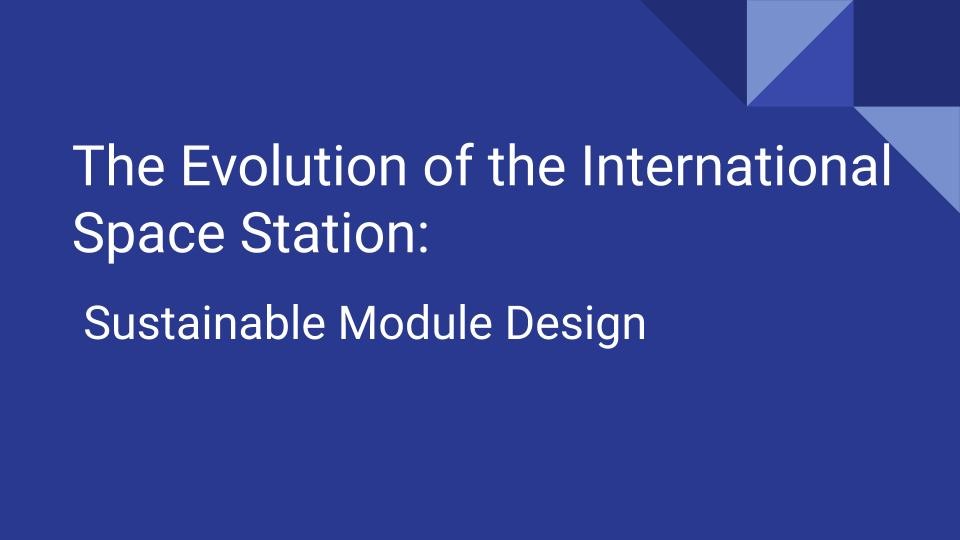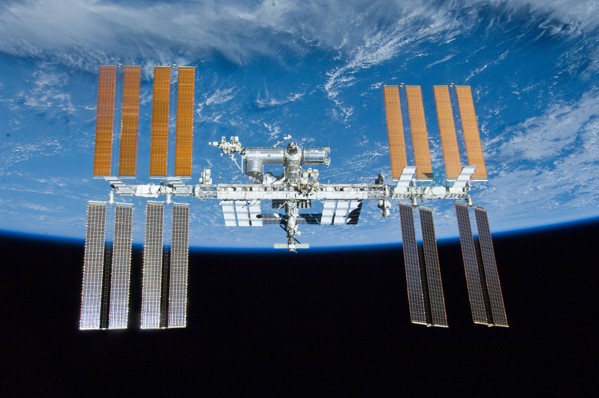
“The exploration of space will go ahead, whether we join in it or not, and it is one of the great adventures of all time, and no nation which expects to be the leader of other nations can expect to stay behind in the race for space.”- JOHN F. KENNEDY
For those who recall the Star Trek theme song, one of the critical lines in the song is the statement “Space…the final frontier…”. Those words may be true, since various evolutions in mankind are taking place simultaneously. In all realms, there is the continuous advancement of knowledge, and it is the curiosity of man, as well as the will to actually get there, that guarantees our success. Floating 250 miles above the planet Earth, is a scientific and engineering hub that has housed humans for the past twenty years. This is the International Space Station (ISS). As an engineering marvel that took 10 years and more than 30 missions to assemble, it is a sight to behold. On a clear day or a clear night…you can see forever…and you can also see the ISS and various planetary bodies, if you know what to look for.
2020 as a unique year, also brought with it some amazing changes. These changes included the first manned mission to launch from the United States since 2009. The Demo-2 mission by SpaceX marked the dawning of a new era. When it comes to certain aspects of life, it is always a good idea to be able to have your own capability, and though the United States did have alliances with Russia to fly their astronauts to the ISS, the Demo-2 mission instilled some sense of pride in the nation, when it came to their ability to be able to independently accomplish something that they were doing for at least thirty years prior to the end of the Shuttle Era. In this current age, from the ISS to the Artemis Program to the future Mars missions, there is definitely a lot happening in the aerospace realm that we need to be aware of as intelligent people of planet Earth.
While the primary place that humans are now travelling to is the ISS, there is still a lot to be accomplished with respect to the sustenance of such an amazing engineering marvel. As a compilation of the efforts of 15 countries, the ISS represents Unity, in a time where there is often an underlying desire for division. Peace and harmony is always the way to go. Advancement takes place via collaboration, and the ISS is a true representation of this effort.
As a unit, the space station is a 460 ton structure, that is the size of a football field. The grander vision for the ISS was generated decades before its actual creation. As an idea that was generated in the 1940’s, during the decades that followed the plans to actually build the ISS came into fruition. By 1969, there was an initial station built by the Russians, that involved the linking of two Soyuz spacecraft. While other structures were developed, there are none as grand, and as organized as the ISS. With the Shuttle capabilities, was the ability to actually re-use vehicles, but also have the ability to haul heavy duty equipment necessary to build the ISS into space.
Since 1998, the phased expansion of the ISS took place, and new opportunities for the utilization of the ISS for commercial and academic missions has taken place ever since. There are many scientific and engineering applications that are currently being run concurrently both in a space and Earth domain, with the intention of finding out how best to utilize them either for life on Earth. Medical applications are one of the experiments that are being conducted in space. As a bridge between the Earth, Moon and the rest of the galaxy, there are ISS experiments that are conducted for the sake of developing technologies that will benefit the next phases of our human exploration. With man’s ability to explore his or her world, the ability to develop our consciousness from a phase of survival to fulfilment will be achieved.
DESIGN OF THE ISS
The ISS, like many modern structures, has evolved over time. Since the 1900’s there have been several modules that were fused together in order to create this wonderful floating laboratory. Starting off with the Zarya module in 1998, we now have the current model that is in full operation and ready for utilization by the upcoming Commercial Crew Missions. Dimensionally, the ISS has a pressurized volume of 1000 cubic meters, 420,000 kilograms, and generates up to 120 kW of power. Designed for six normally operating crew, the center often houses much less than this number of astronauts. On average, there are three to four persons on the station due to limitations in vehicle access to the ISS. A chronological outline of some of the larger units in the ISS include: Zarya (1998), Unity Module (1998), Zvezda (2000), Destiny Laboratory Module (2001), Harmony ( 2007), Columbus Orbital Facility (2008), Japanese Experiment Module (2008), Truss and Solar Panels (2000-2009).
All of these were built by International Collaborations. Let us now delve into the specifications of each of these larger units.
Zarya: The Zarya ( meaning “sunrise”) Module is the functional cargo block of the ISS. As the first unit component of the ISS, the element is housed in the US section of the ISS. The Zarya module was built by the Russians, and funded by the US. The operational functions of the Zarya module is to provide electrical power, storage, propulsion and navigation functions to the ISS. As the initial phase of the ISS it started off as the heartbeat of the unit.
Unity Module: The Unity module was built by the United States. As an initial component to house the expansions and fuse to the Harmony and Tranquility module. The Unity module is essentially a connecting module, that contains mechanical system support, and connects the Russian and US segments of the ISS. The Unity module is also the site’s dining room, and enables the crew to eat meals together.
Zvezda Service Module: The Zvezda Unit was built by the Russians, as their first full contribution to the ISS. The service module was designed to provide space for humans to live onboard the ISS. With technical system support components, as well as living quarters, the service module is definitely multifunctional. It has the ability to provide docking facilities for vehicles such as the Soyuz.
Destiny Laboratory Module: The Destiny Module is a US component of the ISS, and provides a port for laboratory operations. The module houses experiments that cater to health, safety and life improvement. As a zero gravity laboratory, differing perspectives of scientific research can be observed and noted.
Harmony Module: The Harmony module is a utility port, and enables life support on the ISS. As a link between the labs and cargo spacecraft, it is the ideal storage site. The Harmony module also serves as a work platform for the Canada Arm, a robotic function of the ISS.
Columbus Laboratory Module Overview: As a European contribution to the ISS, the Columbus is a pressurized laboratory attached to the Harmony module. The laboratory enables experiments to be conducted in the vacuum of space.
Kibo Laboratory: The Kibo Laboratory is a Japanese addition to the ISS. The focus of studies in the ISS are centered on space medicine, biology, Earth observation, material production, biotechnology and communications research. As a fusion of two research facilities, the variety of capabilities is optimizable. Kibo also has the ability to utilize its exposed facility in order to continuously expose experiments to the space environment.
Integrated Truss: The Integrated Truss Structure (ITS) is an 11 segment section that facilitates power supply to the ISS. The ITS provides a port where solar rays, thermal control radiators and external payloads are attached to the ISS. ISS solar arrays are incorporated into this truss structure, in order to facilitate solar energy conversion to electricity. The current array structure is able to generate up to 120 kW of electricity.
As a modern engineering marvel, the ISS is truly the epitome of the capabilities of the human mind. With the ability to propel us to new frontiers, it is definitely worth the efforts to create the structure, as well as the scientific and engineering experiments that are being conducted on the unit. It will lead to the generation of knowledge that will advance the human race.

